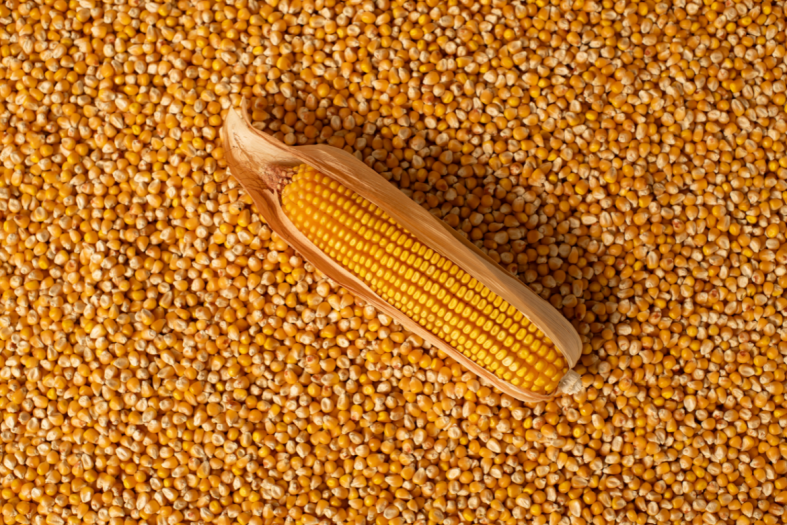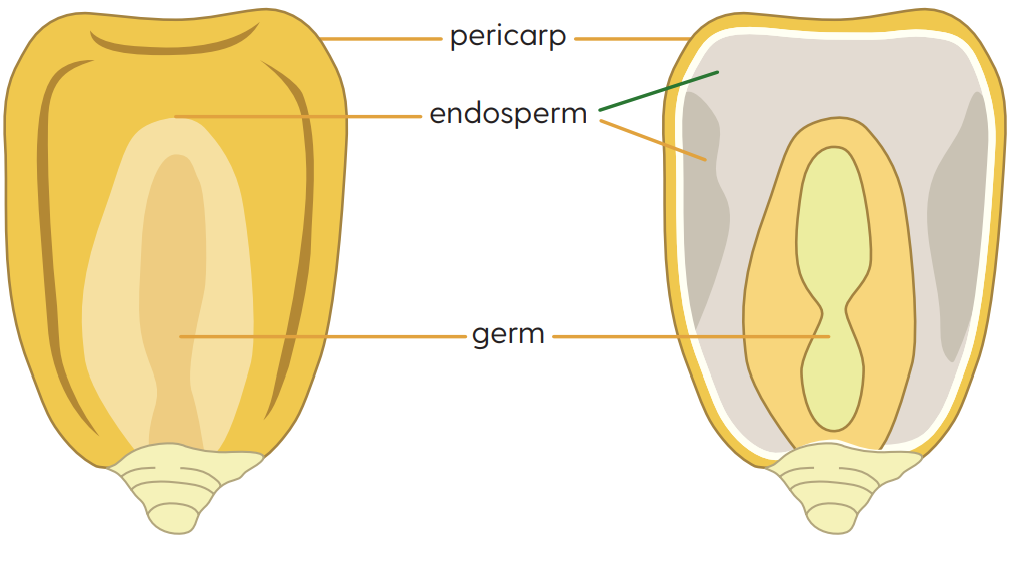
Articles
Looking after your maize seed

The highest-yielding maize crops are harvested from proven maize hybrids planted in even plant stands that have uniform emergence. Seed quality is paramount to your maize crop's success. In this article, we outline the factors that impact maize seed quality and detail some of the steps we take to help ensure the Pioneer® brand maize seed you plant is of the highest quality. We also discuss what you can do to ensure seed quality is maximised right through to when you plant it in the ground.
Maize seed – a living organism
A seed is a living organism that contains the genetic material, nutrients, and energy needed to grow a new plant. A maize seed consists of three main parts: the germ, the endosperm, and the pericarp.
The germ contains a living embryo which grows into a maize plant.
The endosperm is the starchy tissue surrounding the germ, providing energy and nutrients for growth.
The pericarp or seed coat protects the seed until conditions are favourable for germination.
Maize seed germination and growth can be impacted by both physical and physiological factors:
Physical damage (e.g. cracks or broken kernels) can directly damage the germ or disrupt the protective pericarp allowing moisture or pathogens into the seed.
Physiological damage, which impacts the dormant embryo, can occur when maize seeds are exposed to undesirable temperatures, humidity or too much light.

Determining and defining seed quality
Samples of all lots of Pioneer maize seed undergo a range of tests and checks to ensure they meet Pioneer’s stringent quality standards.
Physical:
- Uniformity of seed size and shape, and seed treatment integrity.
- Freedom from contaminants such as weed seeds and inert material.
Physiological:
- Meet or exceed required warm germination and Pioneer Stress Test standards.
Health:
- Freedom from fungal diseases.
- Absence of insect pests.
Genetic:
- Confirmation of genetic purity
Tips for looking after your maize seed
We asked Seed Quality Manager Mark Robertson how growers should look after their maize seed on farm.
- Handle your seed carefully and as little as possible. If your seed arrives on a pallet, try to keep it there until planting. If you need to move the seed, handle the bags gently to avoid cracking seeds or rubbing seed treatment off them. Never throw seed bags.
- Keep the seed in a cool, dry place away from direct sunlight. This will help maintain the life of your seed.
- Don’t store maize bags alongside chemicals which may release fumes that could impact the seed.
- Control rodents and birds, which could make holes in the bags and damage the seed.
Producing high-quality maize seed
Our focus on seed quality starts in the field, continues right through the seed production process and does not end until every bag of Pioneer maize seed is planted in the ground. We asked Seed Production Manager Andrew Powell, to outline some of the things the Production Team do to ensure the Pioneer® brand maize seed you receive is of the highest quality.
Crop Management:
A healthy seed crop is the starting point for high-quality seed production. Careful attention is paid to crop nutrition and the control of weeds, insect pests and fungal diseases.
Harvesting:
It is important to harvest at the right time. If the seed is too wet, a lot of moisture has to be removed, and this can impact its quality. Conversely, if the seed is too dry, there is a higher risk of physical damage during harvesting and processing. Seed maize is harvested on the cob using specialised equipment. The husk is left on the cob to help protect the seed throughout the harvesting process.
Drying:
It is important that cobs are dried as soon after harvest as possible to avoid the risk of sweating. After husking the cobs are carefully lowered into the driers. Air temperature is carefully monitored and altered throughout the drying process to ensure cobs are dried at the correct rate. The final moisture content is also important because if the seed is too damp, it will deteriorate at a faster rate. Once dried to the correct final moisture, the seed quality is stabilised and the remaining processes are less time-critical.
Processing:
The seed must be shelled (taken off the cobs), cleaned, sized, treated and bagged carefully to avoid any physical damage. A combination of easy let-down ladders and specially designed conveyors ensures the seed is never dropped onto hard surfaces.
Storage:
Heat and moisture are the biggest enemies of seed quality. Pioneer seed is stored under controlled temperature (10°C) and humidity (50%) conditions which slow down seed metabolic processes helping to maintain seed quality.
Testing:
The seed testing regime is an important part of ensuring seed meets Pioneer’s rigorous quality standards. Samples are routinely collected throughout the seed production process and shipped to an International Seed Testing Authority (ISTA) accredited laboratory for testing. Every batch of maize seed that leaves our Gisborne production plant has been tested for genetic purity, germination and vigour.
